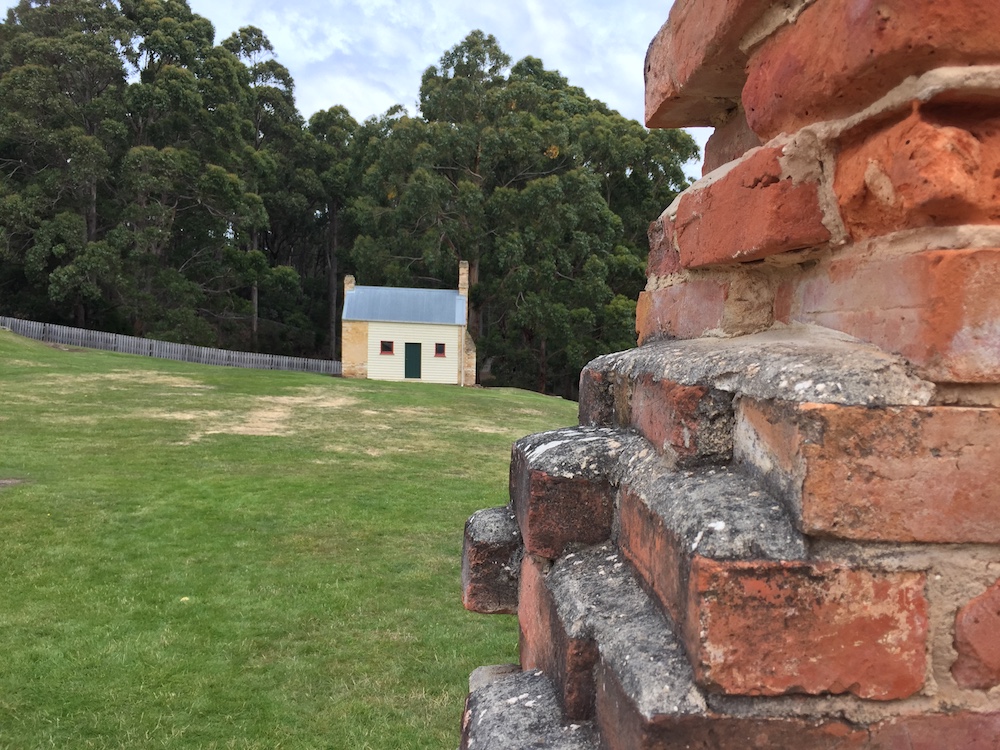Australians became well practiced in the art of forgetting that many of the country’s founding mothers and fathers were convicts, transported from the overcrowded gaols of Britain. These days they embrace their history, however grim.
Many of the key convict sites across Australia are banded together as a UNESCO World Heritage site and one of the most important is the Port Arthur penal colony on the Tasman Peninsula, our destination on our first full day on the island of Tasmania. It would turn out to be a day of contrasts – beautiful landscapes that lifted the spirits, framing tales of hardship and horror from its grim past.
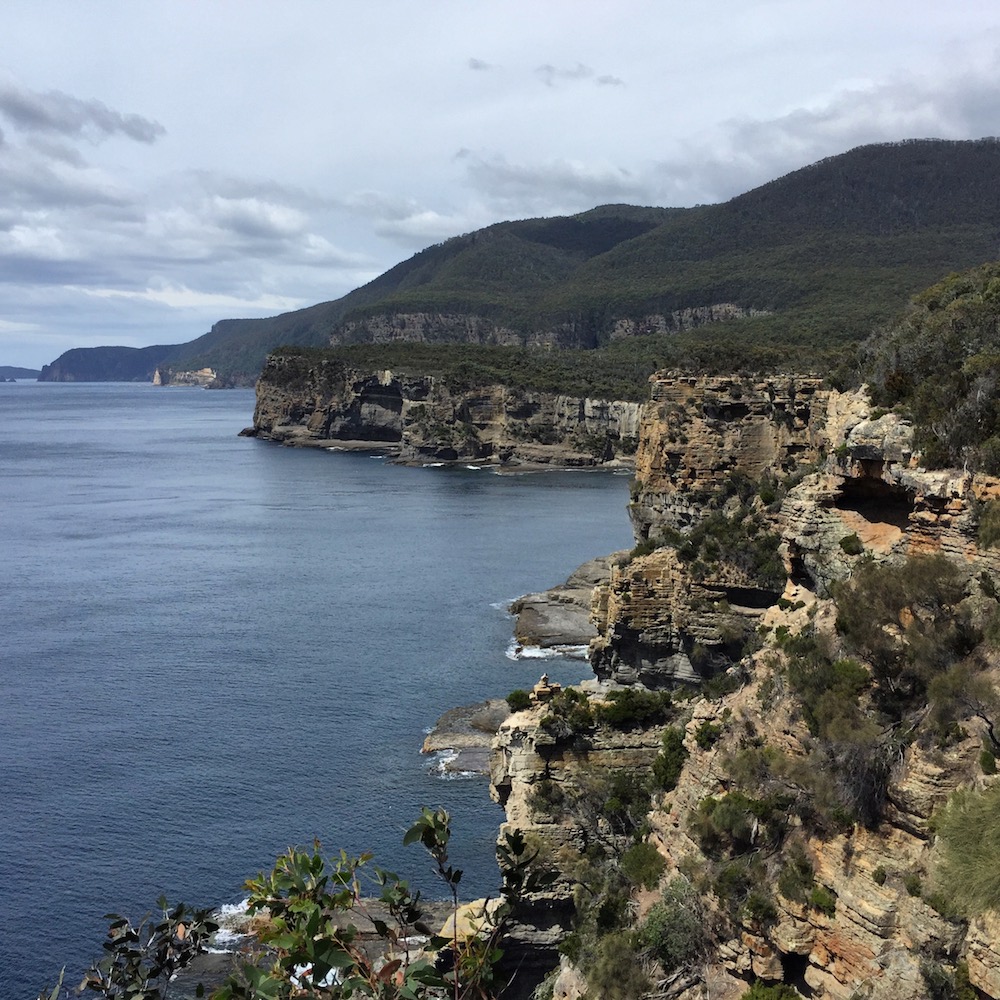
Port Arthur is a bit of a slog from Hobart and we planned an early start, fortified by caffeine from the highly rated Pilgrim Coffee in the city centre. The drive south took us through glorious landscapes of forests, rolling hills, fields and villages. We crossed creeks and hugged the coastline, with its beautiful bays, fearsome cliffs and the pounding surf of the Pacific.
Eaglehawk Neck marks the gateway to the Tasman Peninsula. A narrow isthmus, it played a key role in preventing escapes from Port Arthur back in the 19th century with its notorious dog line – a chain of angry and hungry mutts that only the bravest would’ve tried to cross without a day pass.
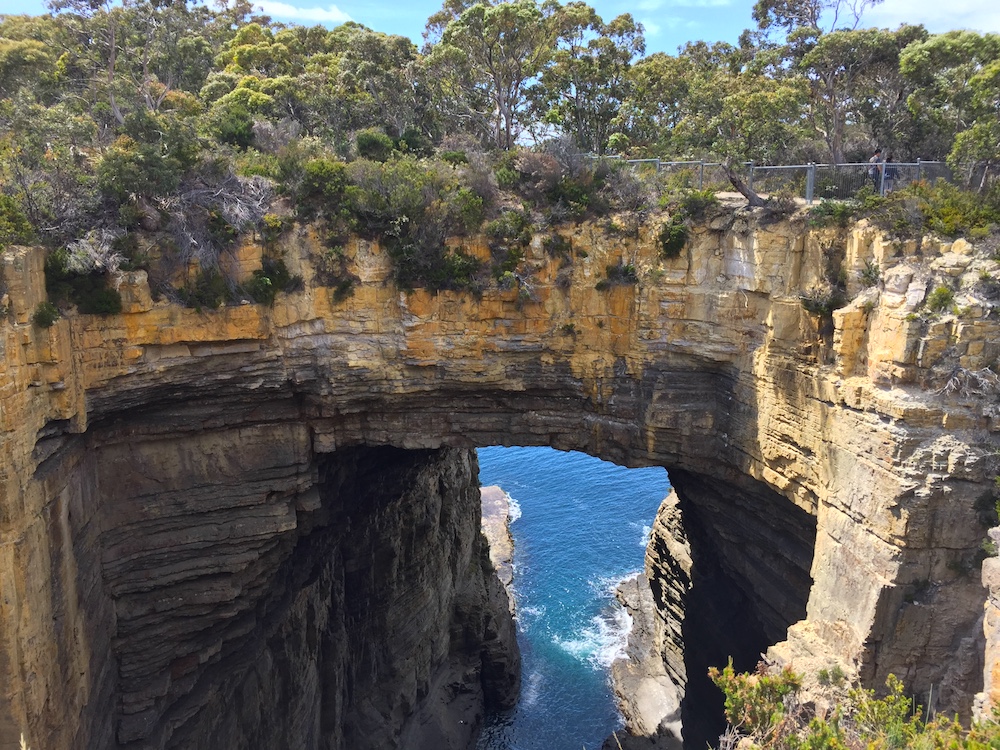
Nowhere was the drama of the Tasman coast more obvious than down a side road just beyond Eaglehawk. The Tasman Arch is exactly what it says on the tin – a natural bridge above the surging surf. We walked on to the Devils Kitchen viewing platform, where the sea foams and leaps several hundred feet below. The views beyond, to the cliffs of the Tasman Peninsula, were truly epic.
After returning to the main road, we were soon at Port Arthur’s smart new visitor centre and the grounds beyond. And they weren’t what I expected at all. Ahead of us lay surprisingly manicured grounds, woodlands, sturdy oaks and quaint cottages. A stream ran through the gentle valley to the bay and beyond it lay the remains of the penal colony itself. The shell of the old penitentiary is the biggest survivor, bang in the middle of the site.
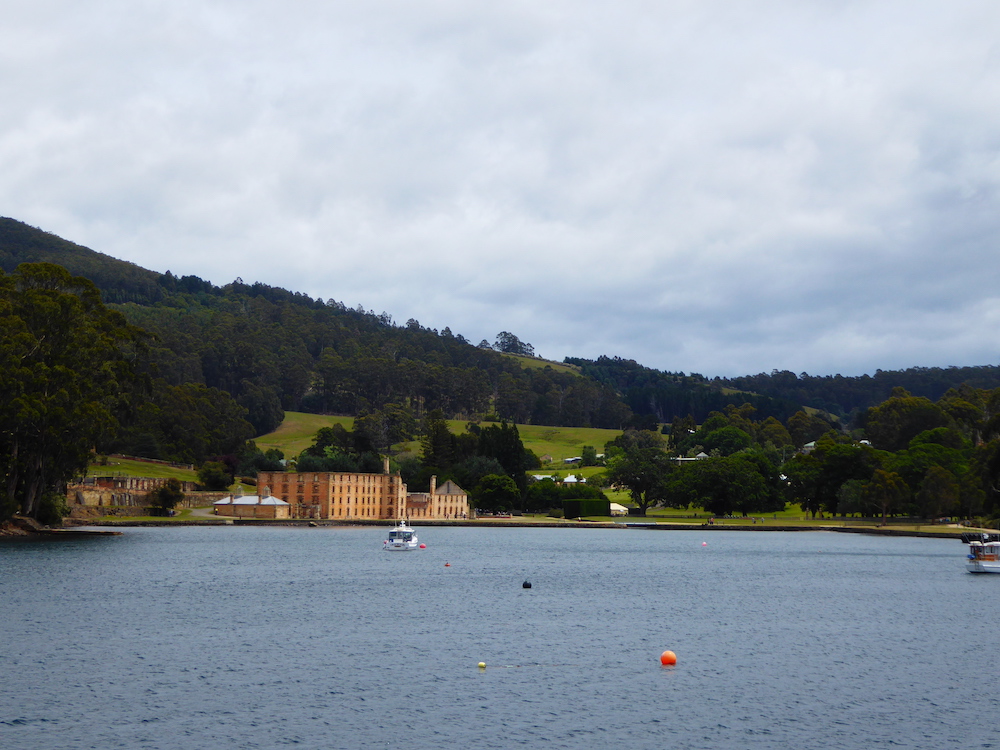
What I hadn’t realised is that once the prison closed in 1877 – 47 years after the site was first established as a timber station – many of the old buildings were demolished or destroyed by bushfires and the area gradually became the village of Carnarvon. Tourism took hold early in the 20th century and several of the buildings from that time remain. Nearby is a melancholy memorial to the victims of a more recent horror, the massacre in 1996 of more than 30 tourists by a crazed gunman.
A quick boat trip around the bay was included in the admission so we jumped aboard and listened to the excellent guide as he described how an island in the bay had become the colony’s cemetery, while another remote area at Point Puer was designated the boys’ penal colony. Horrifyingly, a child as young as nine ended up at Port Arthur, incarcerated in the middle of nowhere. How could that ever have happened?

We toured the site, beginning with the commandant’s house that overlooked the bay from a high point. While it began as a simple wooden cottage, it was expanded many times over the years and ended up being a hotel in the early days of the tourism boom. Nearby are a few officers’ cottages, a guard tower, the remains of a hospital and some cottages, one of which was home to Irish Parliamentarian William Smith O’Brien, who was transported for sedition but was accommodated with a degree of comfort.
The most troubling of the site’s buildings is the Separate Prison. It’s arrival marked the end of harsh physical punishment and floggings, but the start of solitary confinement, silence and a form of mental torture. Built in 1850 in a cruciform shape, its wings are full of cells separated by thick walls. Here, men were meant to contemplate their behaviour and their future during their 23 hours locked up every day. Separate exercise areas were built so they could remain apart while out in the open, but the chapel was even more bizarre with its separate boxes.

I walked around, soaking up the stories of some of the convicts that were featured in the restored cells, and was shocked by the isolation cell where those who contravened the rules ended up. Here the doors were closed and a man was left alone, in complete silence and darkness for days on end. It would’ve driven me mad.
We walked up to a much more pleasant part of the site, where we visited some of the cottages that once housed clergy and administrative staff. There too stands the shell of a church, an old post office and a tiny wooden chapel. There are landscaped gardens where, once upon a time, the delicate wives of officers and bureaucrats would’ve escaped from the hell of what lay around them.
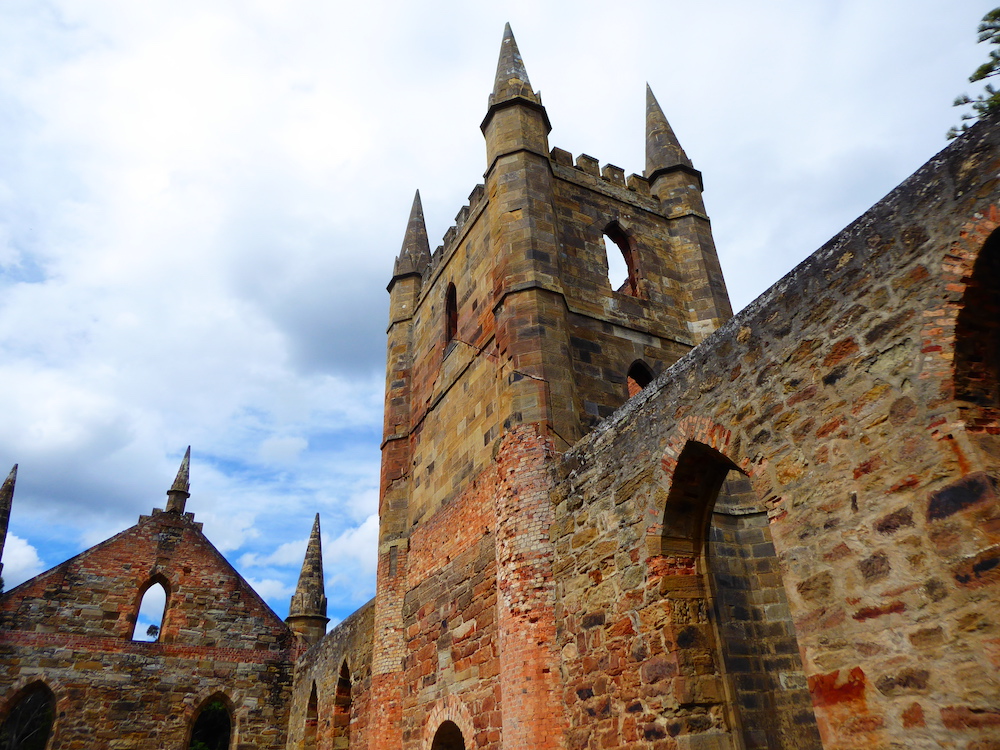
Port Arthur’s odd mix of grim history and beautiful surroundings made it a compelling place to visit. I’m just glad my time there was as a tourist and not a convict…
We drove back to our hotel in Hobart in the late afternoon and settled into the Ball and Chain Grill in Salamanca Place for dinner. Famed for its meat dishes, it didn’t look much on the inside but my fillet steak was one of the best I’ve eaten anywhere. It’s not something they would’ve eaten in Port Arthur very often…

